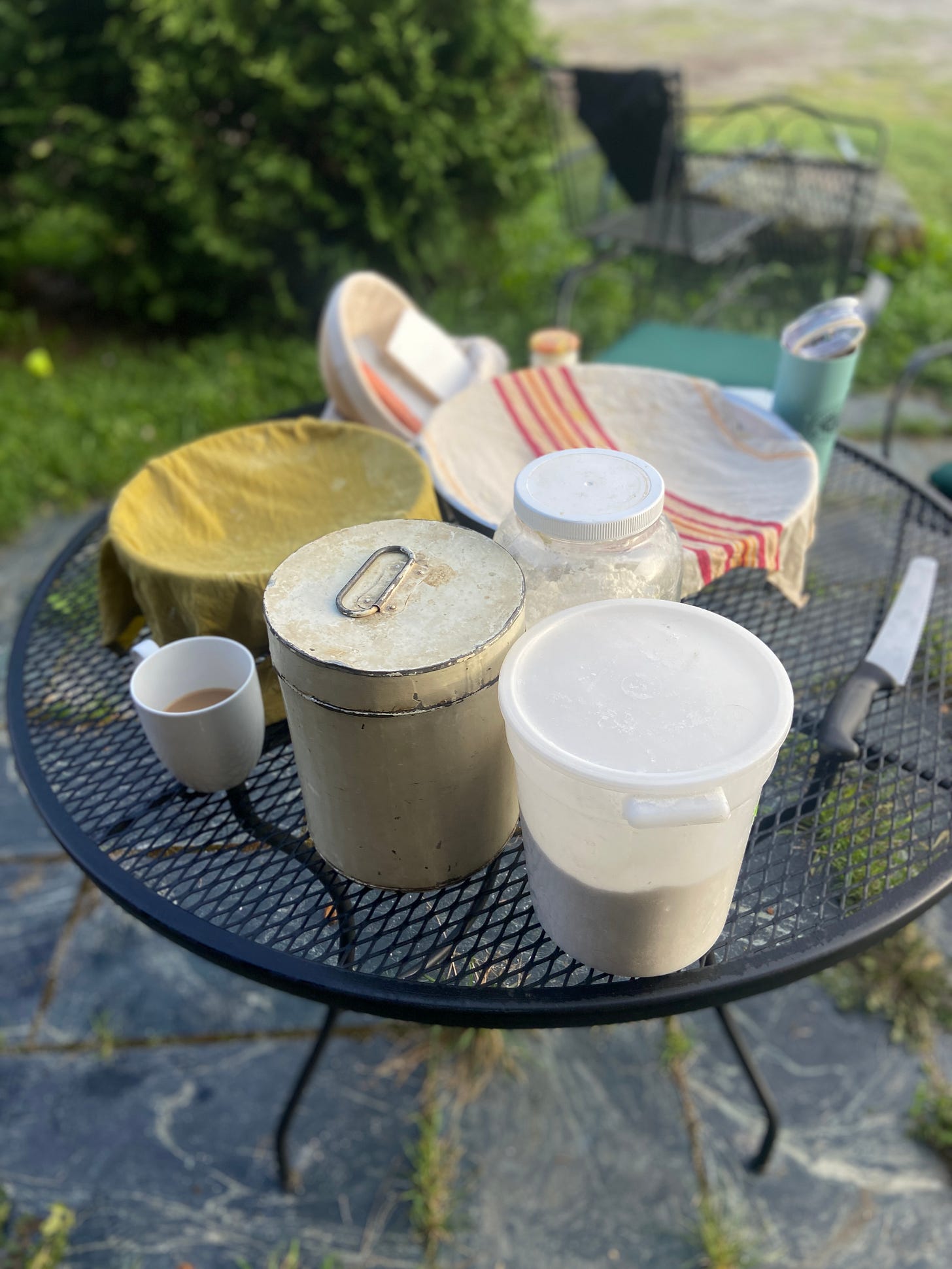The Permaculture Pyramid Scheme: Part 3
What's the point of surviving, if you can't (or won't) share food at your kitchen table?
This is the third and final installment in my three-part series exploring the ethos and feasability of permaculture, based on a nine-day course I took in Vermont. If you’ve just arrived, I suggest you read Part 1 and Part 2 first, so you understand what the heck I’m talking about before I get philosophical on you.

One day midway through the course, we visit the Co-instructor’s property, located right off a busy highway on some gently rolling hills. It’s like him: humble and welcoming. He shows us the diversity of trees he’s planted to shield the house from the highway. He is forthcoming about the decade it took to find property he could afford to buy and develop, how much the property cost, the materials that he used to handbuild the 1,500 square foot house, which has no closets, nor guest room for visitors or family. He wants to change this, so his parents and in-laws can visit their granddaughter in comfort.
As we walk along the rows of black current bushes in the golden afternoon sunshine, I compliment him on the magic he’s built here. He has scraped together a life, and he attributes this to all the hard work and partnership his lovely wife has contributed. He glows with pride when he talks about her.
I mention how much I appreciate this candor to another student. “Yeah,” he jokes, “[Founder] has this attitude of, if you purchase tens of thousands of dollars worth of equipment, you can start milling your own wood and be completely independent.” (Milling your own wood is infamously not time- or money-profitable, and requires a hefty gas-powered machine. You’re better off buying from a local mill unless you’re into conceptual building art.)
The next day, we get a guest lecture from Nick Neddo, a bearded primitive skills expert and artist. As he presides over a table filled with traditional crafts like baskets and deer leather accessories, he explains his philosophy on “survival” skills.
“That’s a pretty low bar,” he says of survival. “We’re here to thrive, not survive. Hopefully we can go beyond that, and actually enjoy our lives.” As he shows us how to use a bowdrill to light a fire, he tells us that as a teenager, he fantasized about living alone in the woods. I ask him if he still fantasizes about surviving alone. “Nobody is supposed to do this alone,” he says. “Now I live in community with neighbors, in family. That’s what this is all about.”
Another guest lecturer is Vivian Kaloxilos, a Quebecois compost and soil expert who brings down the house with her presentation. “I studied environmental science because I was so upset about climate change. I sacrificed my 20s and didn’t travel or attend festivals because I was so anxious,” she says. “Until I learned this and I calmed down.”
It’s when she speaks in gushing terms about the Founder that I realize how big of a deal he is. She met him earlier that year at a conference, and when he invited her to present, she was starstruck. The Founder was inviting her to speak at his design course? All week I had considered him an expert, but now I see he’s actually a guru to many people.
Mid-week, it’s time to take on some real-world design projects. There are two projects for students who have recently acquired nearby properties. I decide to work on the project for a retired doctor. Like me, he’s soured on Burning Man and its wastefulness. He also soured on San Francisco, which has become a city of small fortresses, and bought a property in the next town over the mountain from the Founder’s, to turn into a healing retreat for his friends.
The third project is for the Founder. The property is pretty much done at this point, the land sculpted, several ponds dug and filled, the trees planted, the gardens mature. So the design problem from him is a “human systems” one: how to set up a legal structure and attract other families to the land, to provide labor and homeschool mates for his son. Oh, and design the system in a way where the families don’t impose on him and his time in any way.
One afternoon, I approach the Co-instructor to ask him if he would take a quick look at my property diagram and give me ideas for how to fix some water flow problems. He looks incredibly tired. “I’m sorry,” I say. “If you don’t have the energy right now, I totally understand.”
“No, it’s fine,” he says, gently taking my graph notebook and looking at my diagram. “You know, [Founder] is the water flow person. You should ask him.”
It’s summer, but we’re in the mountains of Vermont, so it gets cold at night. We’re nearing the end of the course, and a savage tropical storm sweeps up from the south. It blows my tent in and soaks everything. I crawl into my car, somehow passing out despite hearing the whoops from the men and the Founder, who are drinking homemade cider in the barn and playing a game where you flip a hammer and try to drive a nail into a stump.
I’m dirty, cold, and exhausted. I’ve asked the Founder several times with varying tones — supplicative, enthusiastic, desperate — if he could get the wood-fired sauna by the pond going, but he always demurs. (“In a cold climate, hot water is no joke,” he said a decade ago. “Being able to take a hot shower is almost as important as eating, it’s a pretty core function.”) This is the state in which I approach the Founder that day to ask him my questions about the water flow on my property.





